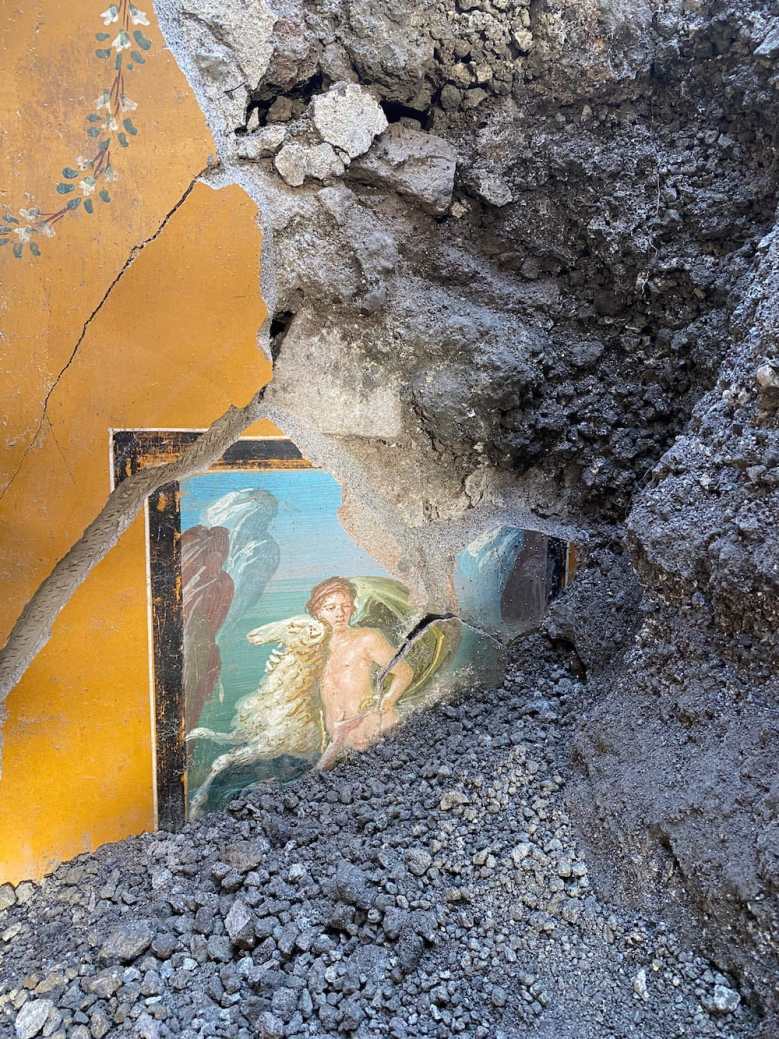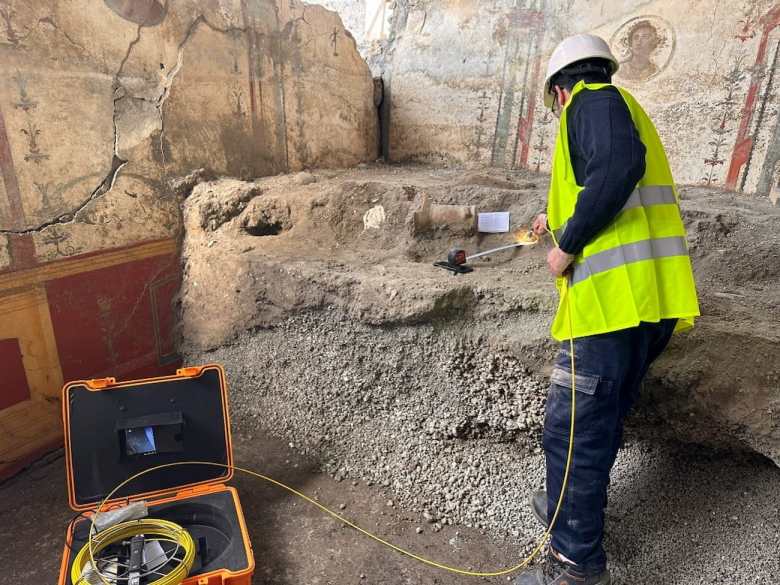In a remarkable discovery at the ancient Roman city of Pompeii, archaeologists have unearthed a fresco depicting the Greek mythological siblings Phrixus and Helle.
Gabriel Zuchtriegel, the director of Pompeii Archaeological Park, described the find as a poignant reflection of history unfolding once more.

“History has repeated itself,” said Zuchtriegel, as he gave an update on excavation and restoration work. “It is a beautiful fresco in an excellent state of conservation. The myth of Phrixus and Helle is widespread at Pompeii but it is topical too. They are two refugees at sea, a brother and sister, forced to flee because their stepmother wants rid of them and she does so with deception and corruption. She [Helle] fell into the water and drowned.”
The fresco showcases vibrant colours and exquisite artistry, with Helle depicted on the verge of drowning, her face obscured by waves as she reaches out to her brother.

Zuchtriegel expressed optimism about making these meticulously preserved homes accessible to the public in the near future, highlighting the cultural and historical significance of this latest uncovering.
The ancient city of Pompeii was destroyed in AD79 by an eruption that killed more than 2,000 people. The ruins have become one of the most visited archaeological sites in the world.

The city, which attracts almost 4 million visitors a year, has come a long way since 2013, when Unesco threatened to place it on its list of world heritage sites in peril unless Italian authorities improved its preservation.
Surprises unearthed in recent months include 13 Nativity-style statuettes that provided evidence of pagan ritual traditions in the ancient Roman city and, last June, a striking still life fresco resembling a pizza that includes an item that looks suspiciously like a pineapple.





